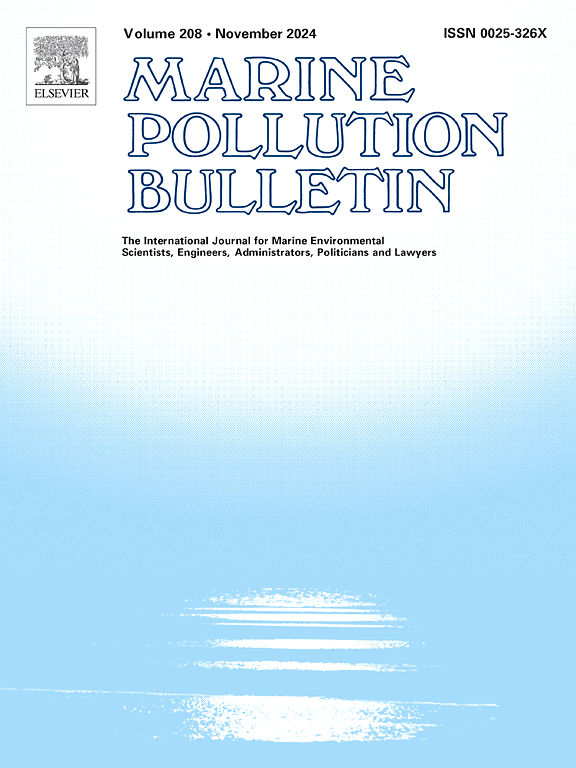Response patterns of benthic functioning in tropical estuaries under varying scales of anthropogenic perturbations
IF 5.3
3区 环境科学与生态学
Q1 ENVIRONMENTAL SCIENCES
引用次数: 0
Abstract
Multifarious human pressures can adversely impact estuaries' benthic functioning, yet this is less understood in tropical regions. This study examined the macrobenthic functional patterns of three differentially impacted tropical estuaries to elucidate the response of traits to stress, link taxonomical and functional structures and metrics and identify influential environmental factors of benthic functioning. Taxonomic and functional indices were positively correlated, suggesting that estuaries were vulnerable to functional shifts following species extinction due to environmental changes. Traits like ‘feeding behavior’, ‘position in sediment’, ‘lifespan’ and ‘ecological sensitivity’ were found effective markers of stressed zones, where resistant modalities predominated in response to disturbances. Rao's Quadratic entropy (RaoQ) successfully distinguished estuarine zones based on pollution levels, while other functional metrics (richness, evenness, divergence) exhibited anomalous trends. The complementary RLQ and Fourth-corner analyses could effectively discriminate disturbed zones in Ulhas, the estuary with a strong pollution gradient. Specific bivariate functional trait-environmental factor relationships were stronger in more impacted estuaries, while they were less so in the less impacted estuary. Environmental filtering facilitated trait clustering in polluted zones and trait divergence in less polluted estuaries. Salinity, pollutants and granulometry were the major influential factors of functional metrics. The Pressure Index was negatively correlated with RaoQ index only in Ulhas indicating that the discriminatory abilities of functional traits and indices were most effective in highly polluted estuaries. These results provide valuable insights to support sustainable management practices for these critical coastal ecosystems.

求助全文
约1分钟内获得全文
求助全文
来源期刊

Marine pollution bulletin
环境科学-海洋与淡水生物学
CiteScore
10.20
自引率
15.50%
发文量
1077
审稿时长
68 days
期刊介绍:
Marine Pollution Bulletin is concerned with the rational use of maritime and marine resources in estuaries, the seas and oceans, as well as with documenting marine pollution and introducing new forms of measurement and analysis. A wide range of topics are discussed as news, comment, reviews and research reports, not only on effluent disposal and pollution control, but also on the management, economic aspects and protection of the marine environment in general.
 求助内容:
求助内容: 应助结果提醒方式:
应助结果提醒方式:


